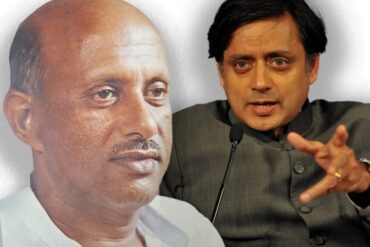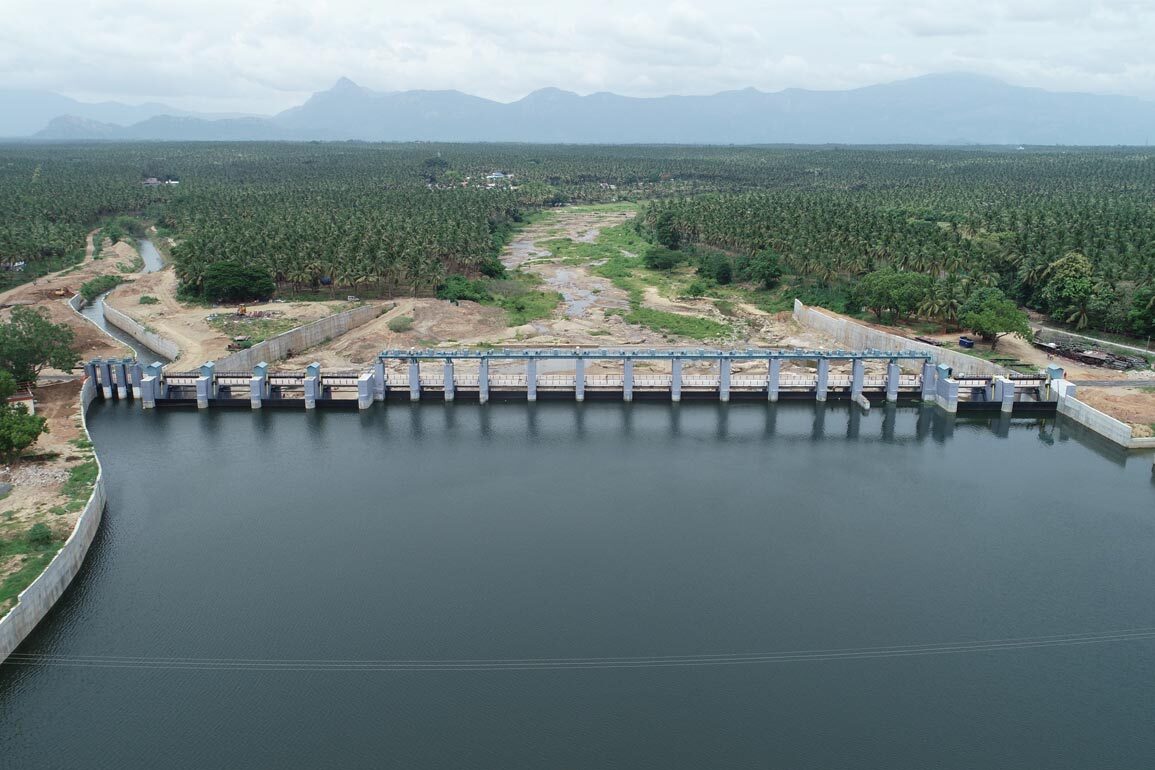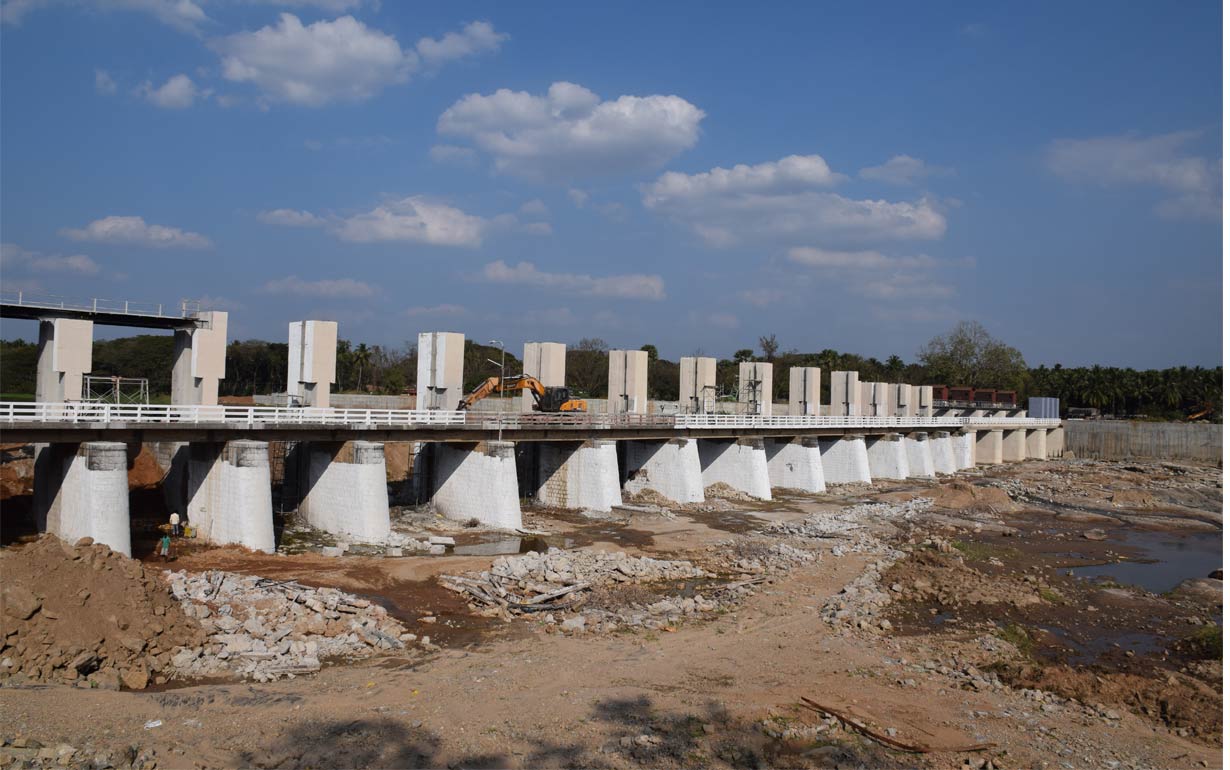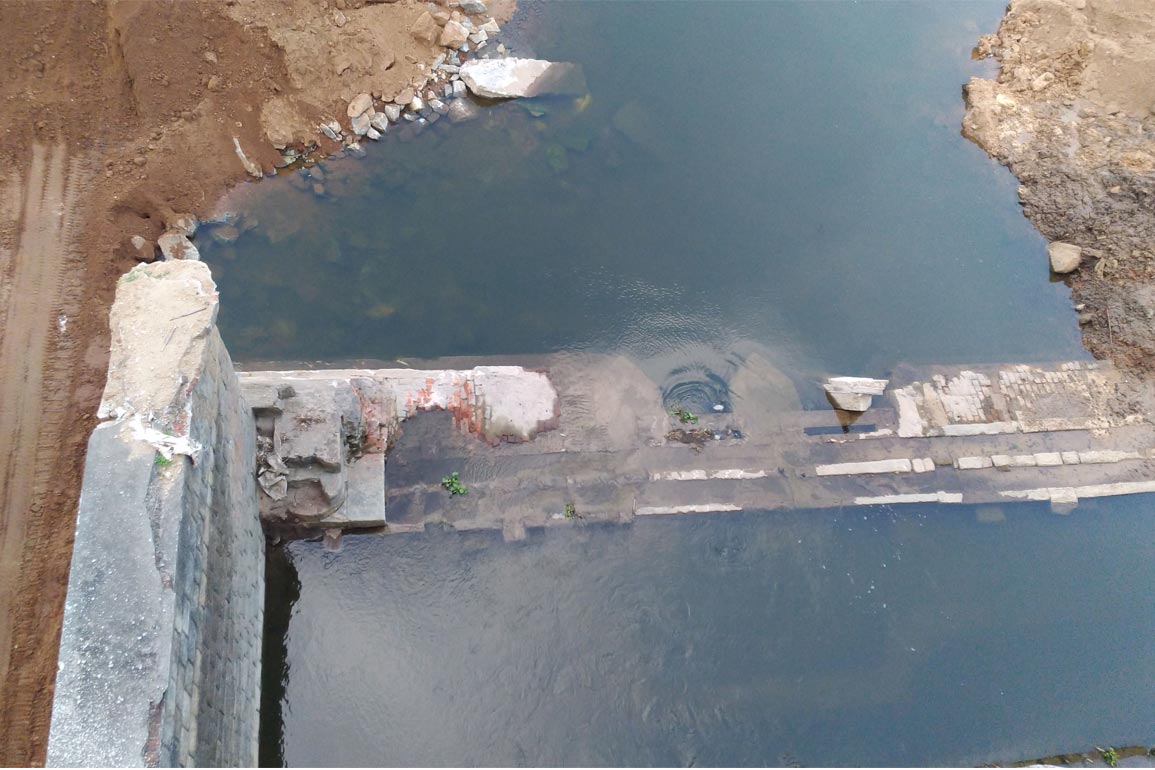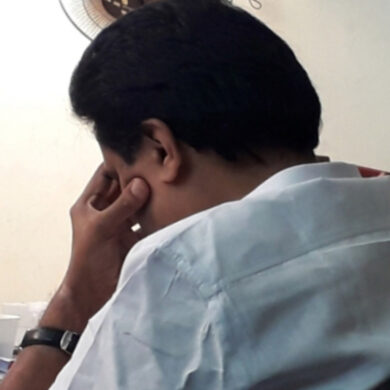According to the book Water Resources of Kerala published in 1958, by the Government of Kerala Public Works Department and Irrigation works, Bharathapuzha had a flow of over 90.3 Thousand Million Cubic Feet (TMC) water on the border with Tamil Nadu. The total flow of Bharathapuzha was 311.8 TMC. But now, the river has been reduced to nothing, with the lack of interest towards its rejuvenation by the alternating governments.
The importance of Right Bank Canal (RBC), Left Bank Canal (LBC) and its history gains more importance when the re-modelled Moolathara Regulator is all set to be inaugurated on Saturday after an eleven-year-old battle waged between vote-bank agendas and farmers in the Taluk. The Kochi Post takes a look at the history of the breaching of the regulator and the political drama in the backdrop of the inauguration.
Moolathara regulator holds the dubious record of three breaches in the past four decades. According to historians, the canal was built in the early 1900s. Later, as part of the Parambikulam-Aliyar Project (PAP), the regulator was rebuilt in 1972 keeping the base of the old regulator built during the British period.
The breaching history of Moolathara Regulator
Moolathara Regulator, which was built in 1972, broke on 19 November 1979, for the first time. The regulator, which is a lifeline in providing water to the agrarian societies here was rebuilt soon within a year in 1980. Nevertheless, it broke for the second time on 13 November 1992. The second effort to rebuild the regulator was completed in 1993. It withstood the climatic conditions for another six years, but couldn’t last long. On November 8, 2009, the regulator broke for the third time. It is to be noted that the breach of the regulator occurs only during November.
The reasons for the breach
According to climate scientists, who studied the cause of the breach, the arrival of irregular monsoon resulted in the breach of the regulator. “Earlier, the heavy South-West monsoon winds arrived by the end of May. Also, the monsoon starts in June and continues until the end of October. The North-East monsoon begins by November first week. But now the arrival of the monsoon has changed to a great extent” said Dr K Saravanakumar, a PhD holder in ‘Climate change and groundwater’.
According to him, the difference in the climate altered the continued process of water flow through the dams in Tamil Nadu via Moolathara regulator. The arrival of rain became irregular and during heavy rains, it became uncontrollable resulting in sudden water flow through the regulator. “Moreover, in the absence of renewal of the Parambikulam-Aliyar Project agreement, Tamil Nadu began to store water in their dams and during floods they opened all the dams without prior information resulting in the breach,” Saravanakumar added.
In all the three years when the regulator broke, Tamil Nadu received excess rainfall and the dams were filled. The water in the dams including Aliyar and Thirumoorthy were open at once due to the excessive storage and the regulator shattered.
Water Politics
The water from the regulator is channelized via two sides of the regulator named Left Bank Canal and Right Bank Canal (RBC and LBC). In the first two breaches, both sides coming adjacent to the LBC and RBC were broken and the regulator was rebuilt within a year. When the third time the canal broke in 2009, only the RBC side of the canal broke and it took a while to reconstruct the same. “The count of farmers utilising water on the RBC side is less compared to that of LBC.
Since 1996, veteran socialist K Krishnankutty was on a losing spree and he lost to K Achuthan of the Congress in three consecutive elections – 1996, 2001 and 2006. By then, Krishnankutty had quit active politics. The vote bank of the RBC belonged to congress and taking them for granted, the Congress didn’t pay any attention to its reconstruction. The place that was once flush with water for agriculture is now dependent on tanker water” said a farmer.
A fund of 46.7 crore was passed in 2014 during the tenure of K Achuthan from the World Bank, Dam Rehabilitation and Improvement Project (DRIP) for the reconstruction of the regulator. According to farmers on the RBC side, K Achuthan took no initiative to rebuild the regulator. This resulted in Achuthan’s loss in the seat in 2016. With the dearth of water, an organisation floated in the name of can ‘RBC’ contested in the Panchayat elections. Congress suffered as the Tamil Christians on the RBC side chose to vote NOTA.
“Following electoral setbacks, Achuthan began initiatives to rebuild the regulator by end of his tenure but K Krishnankutty along with Secretary of the Communist Party of India (Marxist), Kodiyeri Balakrishnan organised a public meeting at Kozhinjampara to stop the construction of the regulator saying it is unscientific. According to them, if the regulator is built, the RBC side will not receive any water. The irony here is that the project that was dubbed to be unscientific by K Krishnankutty during the tenure of Achuthan and his party continued the same project in 2020. You can change your political stand expediently but scientific facts cannot change for mere political gains. The sudden urge to rebuild it with the same plan that was said to be unscientific a few years back is only aimed at the upcoming elections,” said advocate S Kochukrishnan, who is fighting to resolve the water woes of the eastern belt.
The election manifesto of K Krishnankutty delivered at the eastern belt and the western belt were different regarding water provision to both sides. “The quantity of water that has to be provided to the RBC and LBC have not been settled yet. Soon after K Krishnankutty became the minister, the government passed an order saying not less than 3 TMC of 7.25 TMC will be given to RBC. But after farmers of the LBC side protested, another government order was passed within 10 days saying that not less than 3 TMC delivered will be of floodwater. Only Rajasthan has a provision to build canals without assured water, the attempt to extend to the RBC without assured water is illegal,” said S Kochukrishanan.
Advocate Kochukrishnan made another startling allegation against K Krishnankutty, “In 2017 October, when Krishnankutty was only a MLA, he claimed a higher official in the Joint Water Regulation Authority received a bribe from Tamil Nadu government in a meeting held at the collectorate. He not only took no action against the official when he became the minister in the responsible department, furthermore, he supported the official.”
Is there a solution to stop the regulator from breaching?
According to Kochukrishnan, an inter-state meeting must be held to put an end to the breaching of the regulator. Even when the officials say the Parambikulam-Aliyar Project (PAP) agreement signed between Madras State and Kingdom of Travancore-Cochin have got the least importance in the breach, it is closely associated with the breaching of the regulator. “According to the international water law and the judgement of the Supreme court on Cauvery Water Disputes, water must be provided to maintain regular water flow in the river and also no trans-basin water is allowed. As per PAP agreement, Chitturpuzha gets no water to maintain its regular flow. Thus the agreement must be renewed in such a way as to maintain water flow in the river to stop the sudden surge of water during November,” said Kochukrishnan.
Stating the frequency of chances for dam busts in Palakkad district, Saravanakumar said, “According to the Disaster Management Calendar of Palakkad district, chances of dam burst are high. Thus the building of a regulator without scientific studies will result in disasters.”
Inauguration of the canal
The inauguration of the newly built regulator using 63.94 crore from the World Bank, DRIP will be held on Saturday. Chief Minister Pinarayi Vijayan is expected to inaugurate it via a video conference at 4 pm near the regulator. Minister V S Sunil Kumar will also be the chief guest at the video conference. Minister K Krishnankutty will preside over the function.
The money for the construction was sanctioned in 2017 and the validity was till April 2019. As many as six shutters of 10 metres each were added to the existing regulator. Four shutters on the LBC and two on the RBC have been added. The regulator with 13 shutters has been increased to 19 by extending the existing 124.2 meters to 208.48 metres.
Pic Credit: Balus Pattenchery

